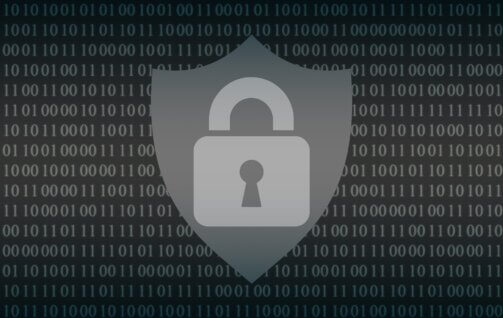There’s no question that data is among the most critical elements of any modern business, big or small. This means that any unforeseen interruptions in the form of downtime for IT maintenance, cyberattack, natural disasters, etc. can all adversely affect the operational efficacy of a business, disrupting its sales, potentially reduce the company’s overall profitability, and become a source of distrust or annoyance to its customers.
This is essentially why companies should learn why disaster recovery as a service is a dependable, faster, and effective way to recover data, reduce any risk of disaster loss, and simultaneously ensure positive business continuity when things like natural disasters (earthquakes, floods, etc) or power failure, outages, etc. occur.
Ever since the dawn of the internet age and the subsequent evolution of digital technology and advancement, managing data and ensuring its synchronization with every core aspect of a business in the form of data backup or making sure that all data is sufficiently prepared for rapid recovery has been a very difficult and painstaking process.
However, thanks to streamlined innovation in cloud technology, today, backing up and recovering your data on the cloud via DraaS is quickly being embraced by many businesses throughout the world. Cloud-based systems help accelerate and simplify the process, making it easier to recover lost data.
Companies should consider implementing DraaS optimization that comes with data replication capabilities that aren’t just simple to integrate, but do not in any way, impact the company’s production workloads, minimizing the risk of downtime.
Understanding How Disaster as a Service Functions
Before you take a deep dive into knowing what disaster recovery as a service is, it is equally important to know how it functions. You see, DraaS operates by duplicating and hosting cloud-based servers that are, in turn, operated by trusted and reputed third-party managed services providers instead of being implemented, maintained, or managed in-house or onsite.
One of the best benefits of having your disaster recovery system managed by a third-party vendor is the fact that in the event of an unforeseen complication such as a cyberattack, a natural disaster, or a systems failure, your data would still be active, stored, and maintained by the offsite managed services provider.
Plus, with an MSP, businesses have plenty of flexibility to work with. For example, companies can buy a disaster recovery service plan via a contemporary subscription model or pay for DraaS services only when they face problems that will put their data and network infrastructure at risk.
Disaster recovery services are specifically designed to help businesses save money, proving that that they don’t have to invest tons of capital into managing and maintaining a DraaS system in-house. Thanks to cloud-based systems, companies don’t need to implement a tailored disaster recovery initiative on their premises. This also means that they won’t have to hire IT specialists or teams of IT experts, thus saving money in the long run.
However, when you talk about disaster recovery, it is just as important for businesses to analyze and contemplate service-level agreements. For example, in a disaster event, such as an earthquake, what happens if both the company and the managed service provider are equally affected? So, it is vital to go for a service provider that has flexible design implementation on a priority basis. This means that they should be able to cater to a client that is impacted by the disaster the most.
The Essential Steps in a DraaS Plan
Data Duplication
This is where the data infrastructure of a business is effectively and efficiently replicated and securely moved to a third-party disaster recovery specialist who then hosts the entire ecosystem remotely. The duplication process must comprise a combination of both virtual and physical systems and servers (which is known as a hybrid solution) because a lot of companies operate both physical and virtual processes.
The Failover
A failover DraaS system effectively and securely moves end-user access to another, more reliable cloud-based server in the event of a natural disaster, a systems failure, or a cyberattack.
The Failback
This is where the managed services providers move the data infrastructure of a client back to its initial site.
The Benefits of a Disaster Recovery Plan in a Nutshell
Before discussing what disaster recovery, it is also important to first understand the types of advantages it can bring you. You see, many companies have thinly stretched IT teams and experts and just can’t afford to invest time and money into comprehensively researching the best ways to initiate an in-house DraaS plan. A third-party DraaS provider helps ease the burden of the planning and implementation process, managing everything offsite using a vast network of technical resources, coupled with industry-level IT specialists.
Another benefit is that protecting and recovering your data in the event of a disaster will be much more affordable if you outsource the implementation to a third-party vendor. Not to mention, you have a better probability of protecting and securing your data in different and independent locations, which may not be affected by the disaster.
Types of Disaster Recovery Models You Can Choose From
Businesses can select from a variety of disaster recovery strategies. For example, you can choose to transition control and management of your entire company data to a DraaS provider. In light of this, mentioned below are some popular DraaS models you should keep in mind.
Managed Disaster Recover
A managed DraaS involves the company handing over the management and security of the data to a third-party managed service provider. It is this service provider that will be accountable and responsible for ensuring your data is protected and recoverable.
If you go with this strategy, you’ll be able to stay in touch with your DraaS provider, making sure that the provider is continuously looped into understanding changes to your data infrastructure, applications, and services at all times. If you don’t want to spend time and money implementing your own DraaS environment, this is the best option that you can choose.
Assisted Disaster Recover Service
Assisted DraaS is well-suited for businesses that want to exercise some management control and discretion over their overall data infrastructure. It is also a good choice if they are using very specific applications that will be too complex or time-consuming for the managed services provider to handle.
With this strategy, the DraaS vendor will provide the company with resources and expertise in continuously enhancing and securing its data recovery processes. However, keep in mind that with this model, it will also fall on the company to implement some part of the disaster recovery implementation on their own.
Self-Service Disaster Recovery Systems
Self-service DraaS is relatively more affordable. Why? In this model, the company is accountable for laying out a disaster recovery plan, testing the efficacy of the plan, and supervising its disaster recovery implementation on its own.
This will also involve hosting their own data system and backup on both physical and virtual servers offsite. The method requires very stringent and carefully tested and executed methodologies ensuring that the company will be able to recover its data should one system fail. This is the best option for companies that already have experienced and highly skilled DraaS staff.
Understanding The Different Types of DraaS Implementation Strategies
It doesn’t matter whether you’re a start-up business, a medium-sized company, or a large enterprise, disaster recovery should be at the very top of your list of data security priorities. You need to be able to manage your sensitive data in the face of a disaster, no matter what type of catastrophe it is.
In addition, you should always ensure that your disaster recovery implementation is in line with your Recovery Time Objectives (RTO), your Recovery Point Objectives (RPOs), resource enhancement, and network and security ecosystem. There should be clear guidelines for quickly and seamlessly being able to recover mission-critical data when struck with a disaster.
In light of this, we’re going to talk about the specific types of DraaS plans you can consider.
Datacenter-Based Disaster Recovery
This strategy primarily centers around your overall data environment and centers. The process comprises three important stages for a successful data center DraaS, which are: operational risk management and assessment, analysis of your critical components, and the management of your infrastructure. If you are unable to invest in an in-house DraaS system, it is wise to outsource the implementation to a third-party managed services provider who will be able to manage and continually optimize your infrastructure processes for disaster recovery.
Disaster Recovery for Network Implementations
This DraaS plan primarily relies on the overall sophistication and technological aspects of your data network. The strategies require a very detailed and well-thought-out recovery framework, including important particularities such as your networking functions, technical staff, and the performance of your infrastructure.
Virtual DraaS
If you want to make your disaster recovery implementation simpler and more effective, you should consider virtualizing the process. Virtual DraaS can offer businesses dedicated and upgraded VMs (virtual machines) and make sure every aspect of your data recovery is achieved through high availability and prioritization. In addition, testing a virtual DraaS is simpler, allowing you to customize or tailor your strategies as per your RPO and RTO.
Cloud Disaster Recovery
When it comes to disaster recovery as a service, a cloud DraaS can be an optimal choice. You see, cloud-based disaster recovery can give you a variety of options and flexibility based on your needs and scope of operations. For example, it can range from just storing your files and data offsite to a complete replication of your entire data infrastructure. However, it is just as important to ensure that you adequately supervise and maintain your cloud disaster recovery implementation, which is why it is important to outsource it to a reputed third-party managed service provider.





